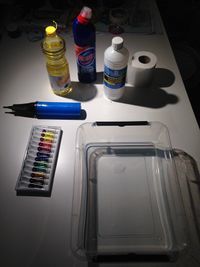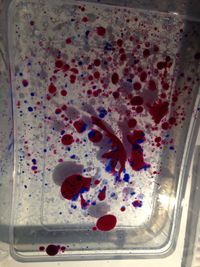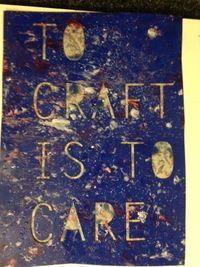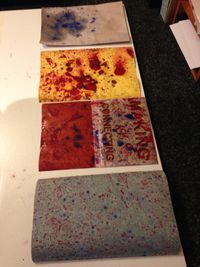Difference between revisions of "User:FleurPeters/week1"
FleurPeters (talk | contribs) |
FleurPeters (talk | contribs) |
||
| Line 16: | Line 16: | ||
[[File:h4.jpg|200px|thumb|left|step3]] | [[File:h4.jpg|200px|thumb|left|step3]] | ||
[[File:h5.jpg|200px|thumb|left|step4]] | [[File:h5.jpg|200px|thumb|left|step4]] | ||
| + | [[File:xxx.jpg]] | ||
Revision as of 07:17, 23 March 2017
HISTORICAL EXAMPLE
For this week I did some research about the old Japanese marbling technique. This technique was used to make marbled paper. They used this paper for special bookcovers for documents or books. I really liked this technique because these days you see it al lot in DIY tutorials.
The process of the technique: In Japan this technique is known as Suminagashi, (floating ink.) They used special inks (Sumi ink). They used a shallow pan after dropping the ink in the pan the ink floats on the water’s surface. There’s also a special resin in the water so the ink will float on the water. The designs where added with a fan or gently blowing. The paper is laid on the surface for a short amount of time.
When I researched this technique I was thinking if there can float other sorts of ink or paint on the water. So I thought about oil. Oil is lighter then water and oil and water do not mix togheter. So maybe oilpaint can float.. So in my first experiments I mixed the oilpaint with terpetine. The thickness of the paint has to be right otherwise the paint will sink (when it’s too thick) or dissapear (when it’s too thin). After dropping the ink on the water you can blow the ink in a marbled pattern. Then the paper can laid carefully on the waters surface.
I also did some lasercutting to make molds for the marbling. That didn’t work quite wel. It’s actually pretty obvious that the water goes under the mold so you didn’t get very straight letters.



